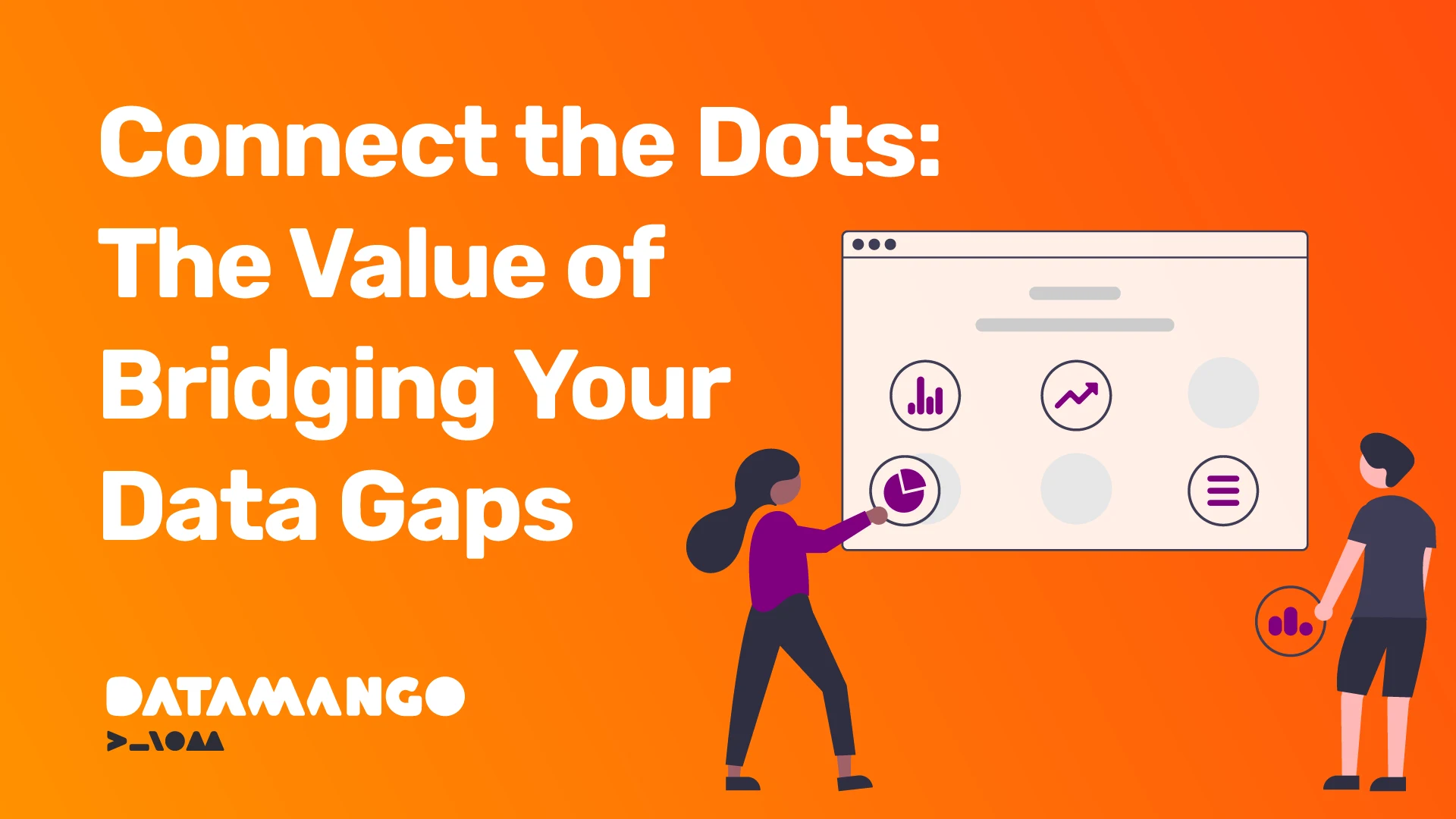
Connect the Dots: The Value of Bridging Your Data Gaps

by Dave Westbrook,
23-Jan-2023
Most business leaders acknowledge the need to leverage the power of data to create value within their organisations. The reality, however, is different...
Studies suggest only about a third of the workforce feel empowered to use data effectively in their professional life. This is troubling and needs to be addressed. If your people don’t feel empowered, how can your business use the data it holds to drive value and promote a culture of growth?
It's also apparent that “the data gap” is not a single missing element but a complex network of gaps of varying shapes and sizes. Failing to bridge these gaps can have a damaging effect on the performance of your organisation and lead to decreased productivity and profitability.
“Where Do I Start?”
To begin addressing this challenge, it is vital to understand the different types of data gaps. For example, there is a gap between the data needs of the business and what is available to them. There is also a gap between the available data and the skills required to use it effectively. Additionally, there is a gap between used and unused data, as well as between data that is collected and not collected.
However, it is not just about knowing where the data gaps are. It's also about developing strategies to overcome them. This may involve investing in the right tools and technologies, providing training and support to staff, and creating a culture in which data is seen as a critical asset rather than a burden. These steps are necessary for businesses to empower their workforce to leverage data to create value.
Adjust Expectations
Many business leaders believe that merely by having substantial amounts of data they will be the answer to all their problems. While this may appear true superficially, the reality however, is different. Executives usually have a lot of data available—often more than they believe. Many even acknowledge that a lack of visibility over their data is detrimental to their organisations’ progress.
Not having enough data isn’t the issue, but instead, it's not having the correct data and not being able to utilise what they do have properly.
The answer is not easy. We must challenge assumptions, solve technical issues, and overcome operational difficulties. Overall, it’s about empowering people. To make it happen, we have to get the data we need and give it to people in a way that works for them.
From Custodians to Users
As a business leader, you understand the importance of data analysis when making informed decisions. However, there are significant obstacles that you must overcome to help business users leverage the power of data. These include a lack of trust in the presented data and difficulties in making data accessible to those who are not data-savvy.
To bridge this divide, data experts—the custodians of your data—need to make data more accessible and trustworthy for the average business user to enable them to discuss it confidently and make better decisions. This could be done through data visualisation, creating a glossary of key terminology, or providing a deeper dive into the data to allow for more informed decision-making.
Bridging Silos
Despite the many and varied ways and formats data is collected, generated, and stored, the pandemic—and its subsequent effects on working practices—has exposed and amplified gaps in information sharing between teams across organisations at all levels.
The challenge is to bring all this data together and create a unified picture that doesn't lose detail at any level while also getting all teams to work from the same source. Doing so allows for insight that is not limited to a point-of-view of a single device, system, or department.
Moving from Data Coordination to Data Security
Senior leaders recognise the importance of leveraging data from all levels of the organisation to improve the quality of business discussions. Still, there is a need to balance the benefits of democratised data with data security.
Organisations must take precautions when providing employees access to confidential data, as it is entrusted to them by their customers and other stakeholders, so it must be utilised responsibly. Cyber security considerations must be prioritised above a free-for-all flow of data—systems should be “security-first” to provide a foundation of confidence that value is created from a secure position.
Conclusion
Organisations struggle to succeed in a data-driven world due to the abundance of data and difficulty bridging the gaps between that data and actionable insights. However, with careful planning, it is possible to create bridges that span the needs of the entire organisation.
Datamango provides guidance on bridging data gaps and transforming businesses by providing analytics and expertise that enables teams to explore data, discover insights, and progress their business.




